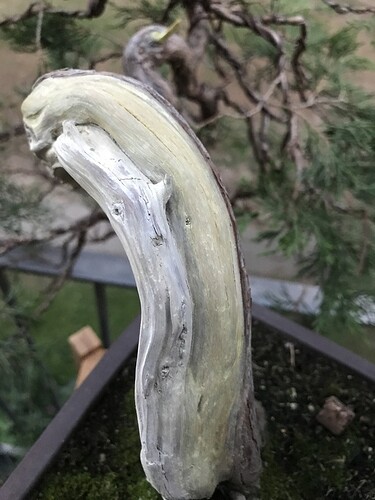So I applied the limesulfur approx 2 days ago and it still looks yellowish. Is this going away in time or should I do something with it?
Hi @philiphartmann,
For me, I’ve found it can stay a bit yellow/beige in two scenarios:
- The wood is freshly carved and hasn’t had a chance to season before you applied it.
- The lime sulphur was applied to dry (and seasoned) deadwood. I think it needs a bit of moisture to react and go white. I don’t know why. Just mist it down a bit first. Diluting the solution a little will also help (I think the concentration it can be purchased as can vary).
In any case, give it a few more days to a week of exposure to water/drying in the sun and it should turn white.
Hey Ralph. Thanks for the help. The water did the trick. The yellows gone. Though not all of the deadwood is equally white, some bits are more brownish in nature. Is that normal?
Should I wait with the wood hardener or apply it after it dried out?
Man that was scary ![]()
That sounds normal, yep. To my eye that variation in tone and colour adds to a natural appearance, but if you wanted to lighten selected areas to have it more uniformly white, you could apply a 2nd coat in specific places using a more dilute concentration of lime sulphur and blend/transition it in by rinsing the brush in water and feathering in the edge with a wet, yet clean, brush.
To avoid the brownish bits, giving it a very good and thorough scrub with water and wire or nylon brush before applying the lime sulphur can help.
With regards to the hardener, it depends what type you’re talking about but I personally wouldn’t just yet. The lime sulphur in itself will significantly slow decay, especially fungal decay and I find the gentle mechanical decay of expanding and contracting as it gets damp and then dries out will improve the aesthetic and give a wonderful look of age. Those tinny little fractures only rain, sun and age can do. Still plenty of time in the future for hardener should you need it (and maybe it’s only the part of the shari that’s in contact with the soil that needs it).

